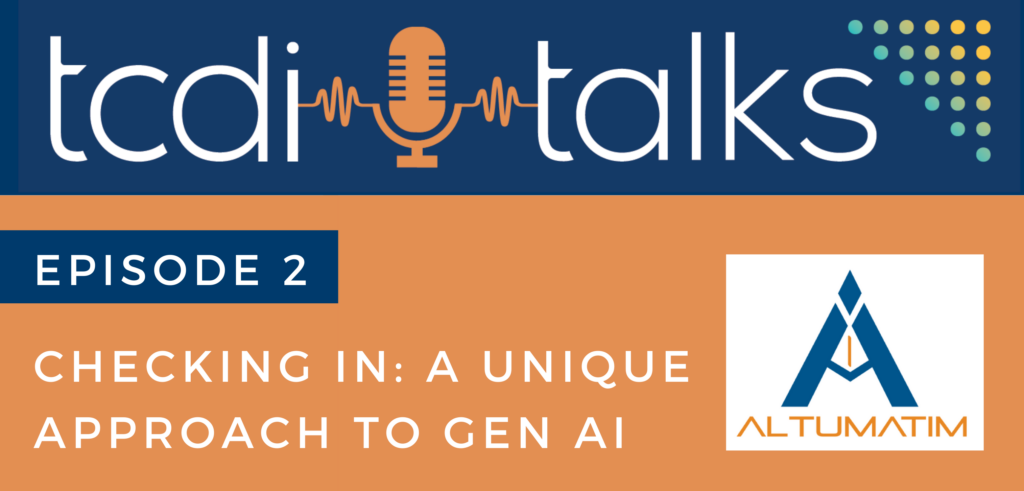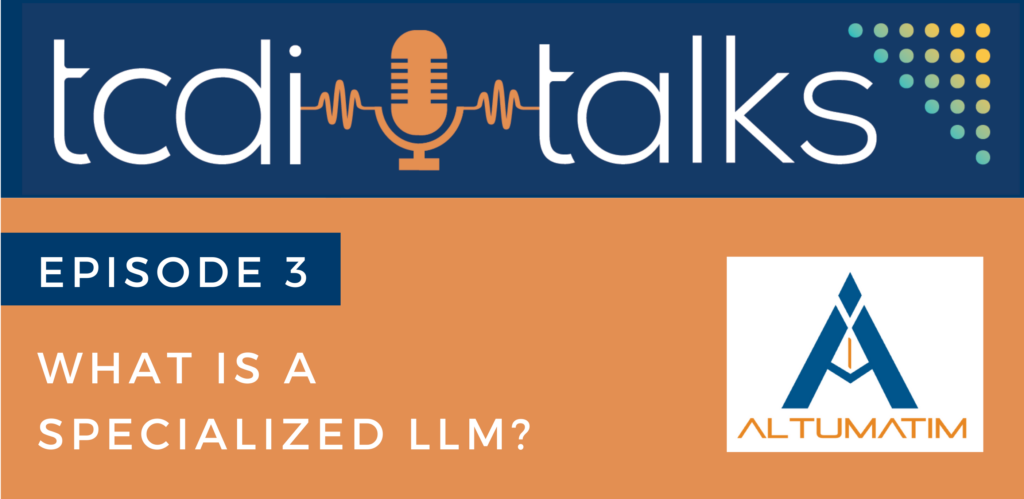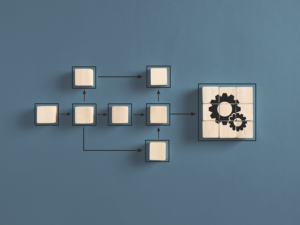TCDI Talks
Home / Webinars / TCDI Talks / What is Gen AI and Why Should I Care? | TCDI Talks: Episode 1
TCDI Talks with Altumatim | Episode 1: What is Gen AI and Why Should I Care?
About TCDI Talks with Altumatim: Episode 1
Welcome to the first episode of TCDI Talks, where experts from TCDI and Altumatim discuss Generative AI (Gen AI) and its impact on the legal industry. In this 13-minute discussion, David Gaskey, Caragh Landry, and Vasu Mahavishnu break down the basics of Gen AI, explaining what it is and how it differs from traditional machine learning. They also tackle the important question: why should legal professionals care about this technology? Whether you’re fully invested or just curious about AI, this episode provides a solid foundation for understanding Gen AI’s potential in the legal profession.
Episode 1 Transcript
0:16 – David Gaskey
4:31 – Vasudeva Mahavishnu
13:33 – Vasudeva Mahavishnu
13:34 – Caragh Landry
Meet the Experts
Caragh Landry | Chief Legal Process Officer | TCDI
With over 25 years of experience in the legal services field, Caragh Landry serves as the Chief Legal Process Officer at TCDI. She is an expert in workflow design and continuous improvement programs, focusing on integrating technology and engineering processes for legal operations. Caragh is a frequent industry speaker and thought leader, frequently presenting on Technology Assisted Review (TAR), Gen AI, data privacy, and innovative lean process workflows.
In her role at TCDI, Caragh oversees workflow creation, service delivery, and development strategy for the managed document review team and other service offerings. She brings extensive expertise in building new platforms, implementing emerging technologies to enhance efficiency, and designing processes with an innovative, hands-on approach.
David Gaskey | CEO and Co-Founder | Altumatim
David has been at the interface between law and technology for more than three decades. Specializing in intellectual property law, he has represented clients from all over the United States, Europe and Asia, including Fortune 50 companies, whose businesses involve a broad spectrum of technologies.
David has extensive experience litigating patent disputes at the trial and appellate court levels including the Arthrex v. Smith & Nephew case that received an “Impact Case of the Year” award in 2020 from IP Management. His litigation experience was a primary influence on how Altumatim naturally fits into the process of developing a case and why the platform is uniquely designed to help you win by finding the most important evidence to tell a compelling story.
Vasudeva Mahavishnu | CTO and Co-Founder | Altumatim
Vasu brings his natural curiosity and passion for using technology to improve access to justice and our quality of life to the Altumatim team as he architects and builds out the future of discovery. Vasu blends computer science and data science expertise from computational genomics with published work ranging from gene mapping to developing probabilistic models for protein interactions in humans.
As a result, he understands the importance of quality data modeling. His extensive experience with business modeling, code construction for front-end and back-end systems, and graphic presentation influenced the architecture of Altumatim. His creativity and commitment to excellence shine through the user experience that Altumatim’s customers enjoy.
Ready for More?
If you enjoyed this video, feel free to check out some of our other great content!
Choosing the Right eDiscovery Tool for the Job
If there is one thing that technology has given us in life and work, it’s choices. Sometimes those choices can...
Read MoreRe-Redefining Document Review: Then and Now
In our constantly changing world of legal services, innovation is not just a competitive edge, it’s essential for success. Our...
Read MoreWhy Should eDiscovery Teams Care About Gen AI?
It’s not uncommon to be skeptical or curious about new technology. In the legal industry, that caution and curiosity are...
Read MoreMaximizing AI’s Impact: Why Process Comes Before Technology
When we’re talking about artificial intelligence, it’s easy to get swept up in the allure of the latest advancements. Generative...
Read More












